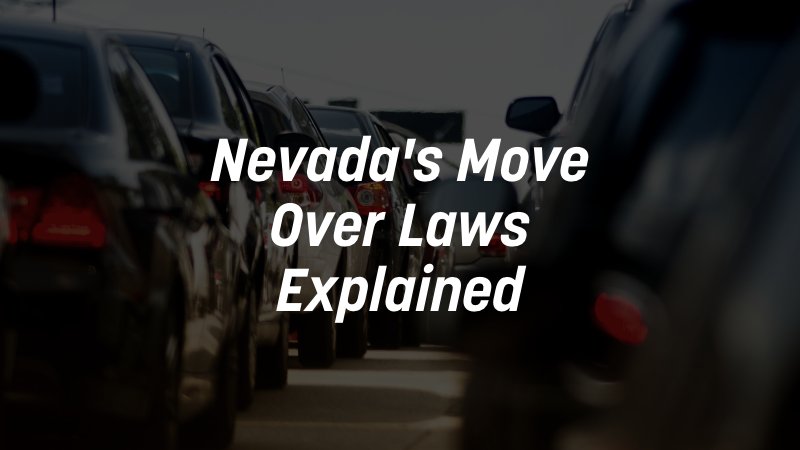Every year, hundreds of roadside workers get injured in motor vehicle accidents. Distracted, careless and reckless drivers can come too close to roadside emergency personnel or utility workers and strike them, often causing serious or fatal injuries. In an effort to reduce the number of these accidents, Nevada passed a “Move Over” Law that requires drivers to switch lanes or slow down for certain stopped vehicles. If you were involved in accident where the Move Over Law was a factor, contact our Las Vegas car accident attorney for experienced legal representation.

What Is Nevada’s Move Over Law?
Nevada’s Move Over Law, Nevada Revised Statutes (NRS) Section 484B.607, encourages drivers to take action to protect individuals who are stopped on the side of the road and using their flashing emergency lights. When certain vehicles are stopped or moving at a slower speed than normal traffic and flashing their amber or blue warning lights, drivers must take appropriate action to give them space.
The requirements under the Move Over Law are as follows:
- Decrease traveling speed to a reasonable and proper speed based on road and traffic conditions.
- Proceed with caution.
- Be prepared to come to a stop.
- If possible, drive in a lane that is not adjacent to the lane where the vehicle is stopped.
If moving one or more lanes away from a traffic incident or authorized stopped vehicle is unsafe or impossible based on roadway, traffic, weather or other conditions, a motor vehicle driver in Nevada must reduce his or her speed to a reasonable pace. This generally means driving at a speed below the posted speed limit.
What Stopped Vehicles Must You Move Over for in Nevada?
The Move Over Law applies to any vehicle that is stopped or has reduced its speed and is making use of lights that meet the requirements of NRS 484D.185, as well as individuals who have been involved in traffic incidents and authorized vehicles.
Authorized vehicles under state law include:
- An emergency vehicle, such as an ambulance or firetruck
- Tow car
- Official Department of Transportation (DOT) vehicle
- Public utility vehicle
- Local government agency vehicle
In addition, anyone who is stopped at a crash scene, has a stalled vehicle, is dealing with debris in the roadway or is outside of a vehicle attending to vehicle repairs and using proper flashing lights receives the same treatment under the Move Over Law.
What Are the Penalties for Failing to Move Over in Nevada?
A violation of Nevada’s Move Over Law is a class 1 misdemeanor. This moving violation can result in a fine of $395 for a first offense, four points added to the driver’s license and even jail time of up to six months. If the infraction occurs in a work zone, the fine increases to $790.
If a violation of the Move Over Law results in injury or death, the driver could face a longer jail sentence, higher fines, a permanent criminal record and driver’s license suspension. The driver may also be held civilly liable for the car accident and victims’ related losses, including medical bills, funeral and burial costs, lost wages, and property damage.
What to Do if You Were Injured Due to a Move Over Law Violation
If you or a loved one was hit by a car while working as a roadside worker, tending to a stalled vehicle or while in an authorized emergency vehicle because a driver failed to move over or slow down, you may qualify for financial compensation for your damages. Consult with a Las Vegas personal injury attorney at Koch & Brim, LLP to learn more about this Nevada law and how it may apply to your car accident case. We can help you bring a claim against the driver who violated the Move Over Law.